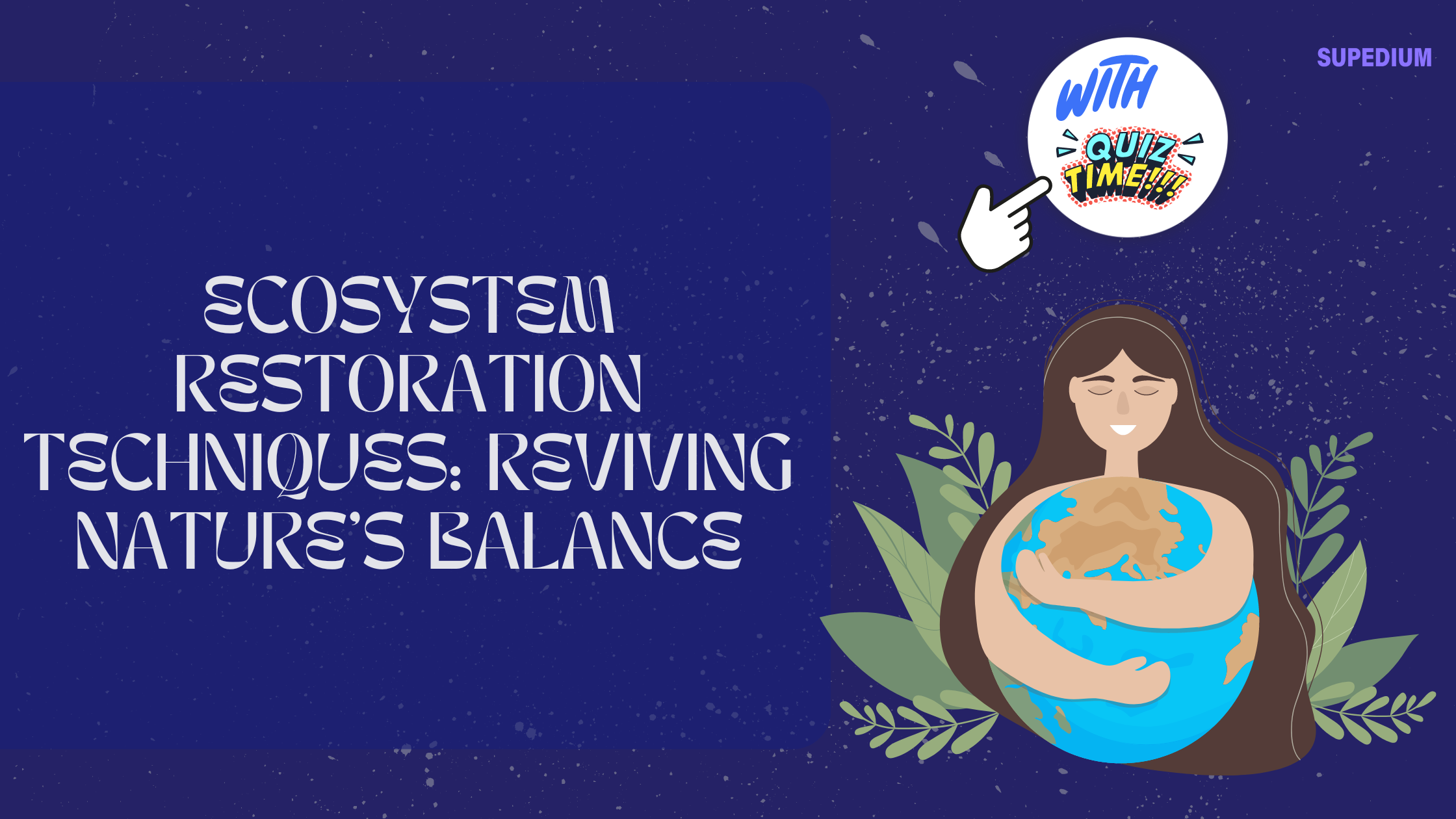Table of Contents
![]()
Natural disasters are catastrophic events caused by natural processes that can have profound impacts on ecosystems and the environment. Understanding these effects and the mechanisms of ecosystem recovery is crucial for managing and mitigating the long-term consequences of such events. This article explores the impact of natural disasters on ecosystems, the natural and human-driven recovery processes, and the challenges and opportunities for future resilience.
Impact of Natural Disasters on Ecosystems
Immediate Effects
Natural disasters can cause severe immediate damage to ecosystems. Earthquakes, for example, can trigger landslides and alter landforms, while hurricanes can uproot trees and flood large areas. Wildfires can destroy vegetation and alter soil composition, and volcanic eruptions can bury landscapes under ash and lava. These events disrupt habitats, leading to the loss of flora and fauna and affecting entire food chains. For instance, wildfires in forested regions can decimate tree cover, leading to a decline in animal species that depend on those trees for shelter and food.
Long-term Effects
The long-term impacts of natural disasters can be profound. Over time, the landscape and soil composition may change, leading to altered ecosystem dynamics. For example, floods can deposit sediments that affect soil fertility, while volcanic eruptions can create new landforms that initially lack vegetation. Changes in species composition are common, as some species may be displaced or go extinct, while others may thrive in the new conditions. These shifts can result in increased vulnerability to future disasters, as altered ecosystems may have reduced resilience and adaptive capacity.
Natural Processes of Ecosystem Recovery
Succession
Ecosystem recovery often begins with a process known as succession. Primary succession occurs in areas where no previous vegetation existed, such as after a volcanic eruption. Initially, pioneer species like lichens and mosses colonize the barren landscape, gradually leading to the development of more complex plant communities. Secondary succession, on the other hand, happens in areas where the soil remains intact but vegetation has been removed, such as after a wildfire. In this case, recovery progresses through stages of increasing plant diversity and complexity.
Resilience Mechanisms
Ecosystems have inherent resilience mechanisms that facilitate recovery. Seed banks in the soil can help restore plant communities by providing a reservoir of dormant seeds ready to germinate. Soil fertility, often affected by the deposition of organic matter and nutrients, supports the growth of new vegetation. Pioneer species, which are highly adaptable to harsh conditions, play a crucial role in stabilizing the environment and paving the way for other species to establish.
Human Intervention in Ecosystem Recovery
Restoration Techniques
Human intervention can significantly enhance ecosystem recovery. Reforestation and afforestation efforts aim to restore tree cover in deforested areas, helping to rebuild habitats and stabilize soils. Wetland restoration projects focus on rehabilitating vital ecosystems that provide flood control, water purification, and habitat for wildlife. Erosion control methods, such as planting ground cover and constructing barriers, help prevent soil loss and support ecosystem stability.
Management Strategies
Effective management strategies are essential for successful ecosystem recovery. Monitoring and assessing ecosystem health allow for the identification of recovery progress and potential issues. Adaptive management practices, which involve adjusting strategies based on observed outcomes, help address unforeseen challenges. Community involvement and education are crucial for promoting sustainable practices and ensuring that recovery efforts are well-supported and aligned with local needs.
Case Studies
Wildfires
One notable case study is the recovery of chaparral ecosystems in California after wildfires. These ecosystems are adapted to periodic fires, and while the immediate impact can be devastating, recovery is often rapid due to the presence of fire-resistant plants and seed banks. Another example is the impact of bushfires in Australia on the Great Barrier Reef. While the reef itself is not directly affected by fires, the runoff from burned land can lead to coral bleaching and other ecological issues.
Hurricanes
Hurricane Katrina’s impact on the Gulf Coast wetlands is a significant case study. The destruction of wetlands led to increased erosion and loss of habitat for many species. Recovery efforts have focused on restoring wetland functions and improving resilience against future storms. In Puerto Rico, Hurricane Maria caused extensive damage to rainforests, leading to efforts to restore native vegetation and improve ecosystem health.
Floods
The 2010 Pakistan floods had a profound impact on the Indus River ecosystem. The floods altered river channels and deposited large amounts of sediment, affecting agriculture and habitat conditions. Recovery efforts have included floodplain management and restoration of natural river processes. Similarly, the 2011 Tōhoku earthquake and tsunami in Japan caused significant damage to coastal ecosystems. Recovery has involved restoring mangroves and wetlands to enhance natural defenses against future tsunamis.
Challenges and Considerations
Climate Change
Climate change poses significant challenges to ecosystem recovery. Increasing frequency and intensity of natural disasters can overwhelm recovery processes and reduce the resilience of ecosystems. Rising temperatures and altered precipitation patterns can also affect species distributions and ecosystem functions, complicating recovery efforts.
Human Activities
Human activities such as land use changes and urbanization can hinder recovery by fragmenting habitats and increasing pollution. These factors can exacerbate the effects of natural disasters and slow down the recovery process. Addressing these issues requires integrated land management and pollution control measures.
Social and Economic Factors
Social and economic factors play a crucial role in ecosystem recovery. The impact on local communities, particularly in vulnerable areas, can be severe. Economic costs associated with recovery efforts can be substantial, requiring adequate funding and resources. Engaging communities in recovery efforts and supporting sustainable development practices are essential for long-term success.
Future Directions
Advances in Science and Technology
Advancements in science and technology offer new opportunities for enhancing ecosystem recovery. Remote sensing and data analysis provide valuable insights into ecosystem health and recovery progress. Innovations in restoration techniques, such as the use of drones for planting and monitoring, are improving the efficiency and effectiveness of recovery efforts.
Policy and Legislation
Effective policy and legislation are critical for supporting ecosystem recovery. Building codes and land use planning can help reduce vulnerability to disasters and promote resilient infrastructure. International cooperation and frameworks, such as the Sendai Framework for Disaster Risk Reduction, provide guidance for integrating disaster risk management into recovery efforts.
Conclusion
Understanding the impact of natural disasters on ecosystems and the mechanisms of recovery is essential for effective management and mitigation. While natural processes of recovery are robust, human intervention can enhance and accelerate these processes. Addressing challenges such as climate change, human activities, and socio-economic factors is crucial for building resilient ecosystems and communities. Continued research, innovation, and collaboration will be key to supporting ecosystem recovery and ensuring a sustainable future.






Be the first to comment